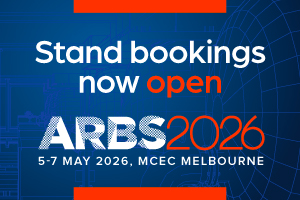Building confidence in performance prediction
Team Catalyst Director PC Thomas makes the case for an accreditation scheme for professionals working in building performance simulation.

Delivering high-performance buildings – whether targeting net zero emissions, energy-efficient operation or moderation of demand on a utility grid during extreme climate events – requires the ability to predict their performance in a realistic and practical manner.
This form of complex analysis is called building performance simulation. It requires the professional carrying out the analysis to have a unique understanding of how all building systems can impact occupant comfort and energy use. These systems include building fabric, HVAC systems, lighting, controls, on-site power generation, domestic hot water and vertical transport, among others.
Codified simulation
Australia has a performance-based National Construction Code (NCC). The current version (2022) provides multiple pathways to demonstrate compliance for minimum performance of thermal comfort and greenhouse gas (GHG) emissions using building performance simulation.
The “verification using a reference building” (VURB) compliance process for houses (Part H6) outlined in NCC Vol 2 requires architectural and building design skills to develop an accurate geometric representation of the building, shading devices, thermal zoning, construction systems, window systems, internal loads and schedules.
Building simulation is regularly used to demonstrate the compliance of building fabric (Vol 1, Part J1V3) using thermal comfort and GHG emissions metrics for small and large non-residential buildings (Class 3 to 9). Many local government areas (LGAs) also require demonstration of minimum daylighting performance, taught in many graduate degree programs that focus on sustainable construction.
Formalising the skillset
Predicting operational performance for NABERS commitments – or for demonstrating GBCA Green Star energy credits – requires an order of magnitude increase in skill level to model HVAC systems and appropriate control strategies. This should be the domain of professionals with knowledge and understanding of how these systems are configured and controlled, as well as the limitations of the simulation “engine” being used. The author’s preference is to use well-researched and documented simulation engines in the public domain.
“There is a strong case to recognise the competence required to perform these technically complex works in the industry.”
The Australasian affiliate of International Building Performance and Simulation Association (IBPSA Australasia) and AIRAH are looking into developing an accreditation scheme to fill this gap.
IBPSA members have long been involved with the development of the fundamental physics and mathematics underpinning building performance simulation, and AIRAH members have the practical knowledge to design, specify and model the performance of HVAC systems.
Accreditation would recognise the competence and experience of individuals who carry out this very technical analysis. It would also provide confidence of quality to consumers of building performance simulation analysis, including LGAs, state and federal governments, building owners, developers and green building rating schemes.
The accreditation scheme would align specifically with Australia’s building industry and its regulations, and would provide digital micro-accreditation credentials that could be easily verified and shared online. Watch this space!
Building Simulation 2025
IBPSA Australasia and AIRAH are excited to jointly host IBPSA’s bi-annual international Building Simulation 2025 Conference in Brisbane from August 24–27.
You can see the full program and register for the conference via the BS2025 website.
About the author
PC Thomas is the director of Team Catalyst and an adjunct associate professor at the School of Architecture, Design and Planning at The University of Sydney.
He is a fellow of the International Building Performance Simulation Association (IBPSA) and heads the scientific committee for the 2025 Building Simulation Conference.


PREV
NEXT
Comments
Advertisements
Recent news
- 2025 AIRAH National Awards: Bryon Price, L.AIRAH, awarded the James Harrison Medal
- 2025 AIRAH National Awards: Stefan Jensen, L.AIRAH, wins WR Ahern Award
- 2025 AIRAH National Awards: Brett Fairweather, F.AIRAH, wins Excellence in Knowledge Building
Latest events
- 2025 AIRAH National Awards: Bryon Price, L.AIRAH, awarded the James Harrison Medal
- 2025 AIRAH National Awards: Stefan Jensen, L.AIRAH, wins WR Ahern Award
- 2025 AIRAH National Awards: Brett Fairweather, F.AIRAH, wins Excellence in Knowledge Building
 PC Thomas
PC Thomas

Leave a Reply